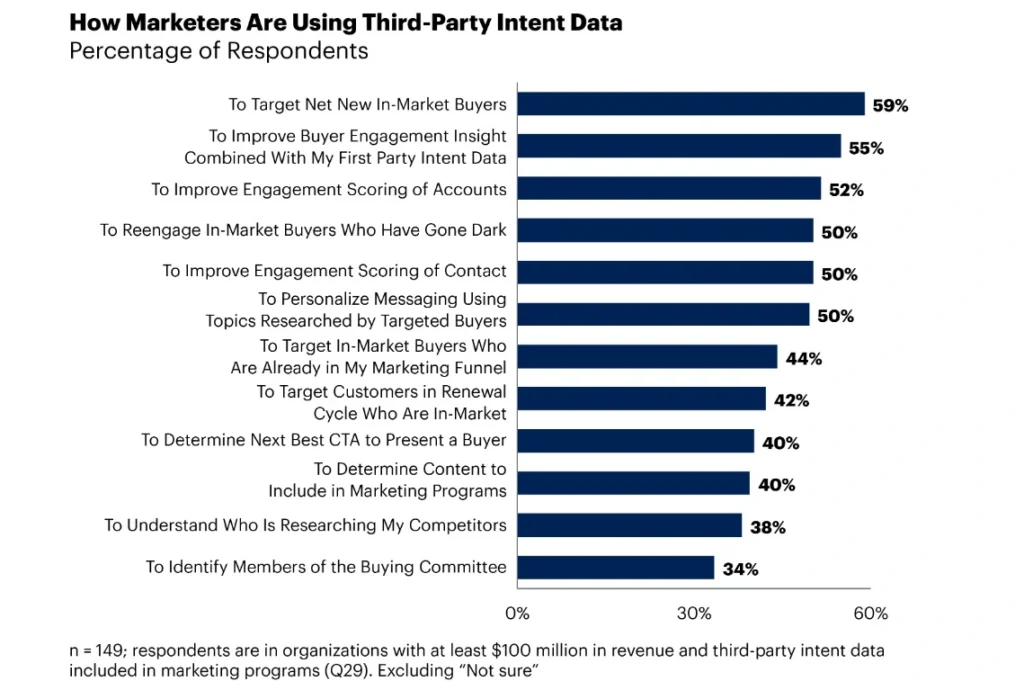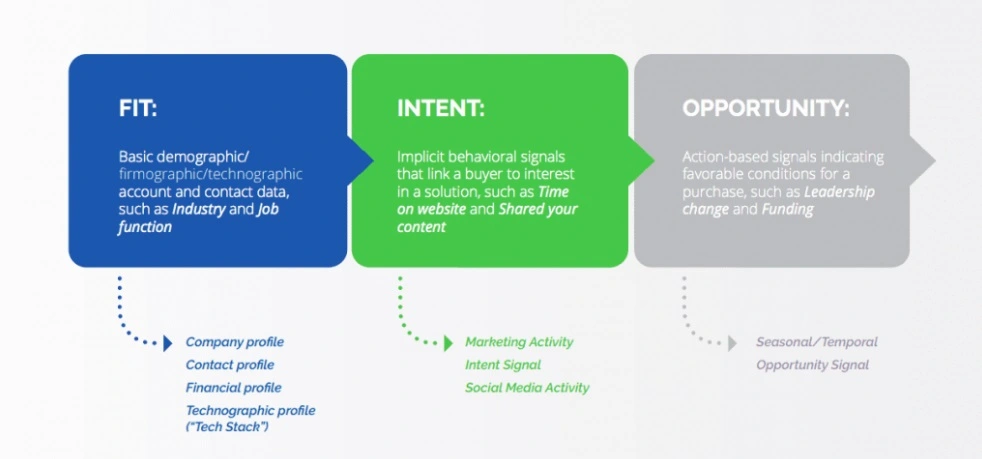What Is Intent Data, and How Do You Gather (and Use) It?
You have potential customers online right now searching for a solution to problems you can solve. Finding those customers and reaching out to them early in the buyer’s journey is the purpose behind intent data.
Countless statistics show that most B2B customers are more than halfway through the buyer’s journey before they reach out to a potential vendor.
With intent data, you get the chance to put your products and services in front of these clients earlier in their journeys. This could put your brand in a prime position to earn their business.
Here, we will explain what intent data is and teach you how to gather and use it to help improve your demand generation strategy.
Key Takeaways
- Intent data is information from the internet that indicates an individual’s intent to purchase something.
- Intent data is a valuable resource for B2B companies.
- There are three categories of intent data: first-party, second-party, and third-party.
- Companies gather first-party intent data independently and purchase third-party intent data from co-op organizations.
- Businesses can use intent data to reach new customers, prioritize accounts, and retain current customers.
What Is Intent Data?
Intent data shows what specific internet users are interested in and what they are likely to purchase. For example, if someone searches for “durable leather shoes” one day and then “best-rated hiking boots” the next, intent data will show that this person is most likely interested in purchasing a new pair of leather hiking boots.
While some internet searches and website visits are somewhat frivolous or just for fun, most searches and visits have some intent behind them and can be used to predict what someone is most likely to do or buy next.
Intent data falls into three categories:
- First-party data: First-party intent data is data you gather from your website. You likely already track and use this information.
- Second-party data: Second-party intent data comes from search engines and social media platforms.
- Third-party data: Third-party intent data comes from data co-ops that collect and analyze data for specific trends.
According to Gartner, businesses that use third-party intent data are 2.9 times as likely to get a conversion rate of at least 10% than those that don’t.
How Do You Gather Intent Data?
You can gather first-party intent data through your websites and platforms. However, this data may not reveal much about potential new clients and only shows you a small part of the buyer’s journey. You gather first-party intent data using:
- Website cookies
- Marketing automation
- Email tracking
- Social listening tools
You can get second-party intent data from review sites, publishing networks, social media, and search engines.
Third-party intent data typically has the most valuable information. You need to purchase the data from a third-party vendor to get this.
Data co-ops collect third-party intent data and aggregate online activity from thousands or millions of online sources. These groups are continually collecting and analyzing data to create baselines. They can look for data spikes on certain topics and types of content that signal intent. When you purchase intent data, you tell them what you are looking for.
When purchasing third-party data, make sure you buy it from a reputable source and be extra cautious with your data security. You want third-party intent data with these three qualities:
- Comes from a large content repository.
- Easily machine-readable.
- Logged to an individual/buyer.
How to Use Intent Data
Once you have the intent data, how do you use it? Gartner reports that most B2B brands use third-party data to target new buyers and improve buyer engagement.

With valuable intent data in your hands, you can use that information to reach customers who already want to buy your products. They just don’t know it yet.
Consider these five scenarios for using intent data:
- Building targeted account lists: Use the intent data to create lists of potential buyers based on their level of interest. Your sales and marketing teams can sort through these lists and target the customers with the strongest intent first.
- Identifying early interest: B2B buyers tend to wait a long time before reaching out and expressing interest in certain products or services. With buyer intent data, you can see early signs of research activity and cater marketing campaigns to reach out to those early thinkers.
- Personalizing outreach: Sales and marketing teams can use intent data to personalize outreach materials to match the products and services the contacts have already shown an interest in.
- Prioritizing accounts: Prioritizing accounts or lead scoring is essentially triage for a sales team. You put the highest priority on the leads with the strongest intent towards purchasing. Intent data is an invaluable resource for this process.
- Retaining customers: While intent data is mostly for gaining new customers, it is also a valuable resource for keeping the ones you already have. Intent data could reveal customers that are searching for new solutions. When you discover this, reach out to these clients to discuss their pain points, and provide solutions to their problems.
Many of these strategies would be considered intent-based marketing. This video explores how to use intent data to customize your marketing strategies.
Combing Intent Data with Other Data Sources
The best way to use intent data is to combine it with data from other sources. For example, for each prospect, you need to evaluate how well they fit your intended demographic group, how strong their intent is, and if the opportunity is right to sell them what they need.

Reignite Your Demand Generation Strategy with Televerde
Has your B2B company struggled to find new leads? At Televerde, we offer a turnkey B2B lead generation service that can help generate and qualify new leads. We deliver best-fit prospects that all fit within your ideal customer profile. With these leads, your sales team can deliver higher conversion rates. We also offer sales and customer support solutions for complete end-to-end results.
Ready to give your demand generation the boost it needs? Contact Televerde today to learn more about our services.


